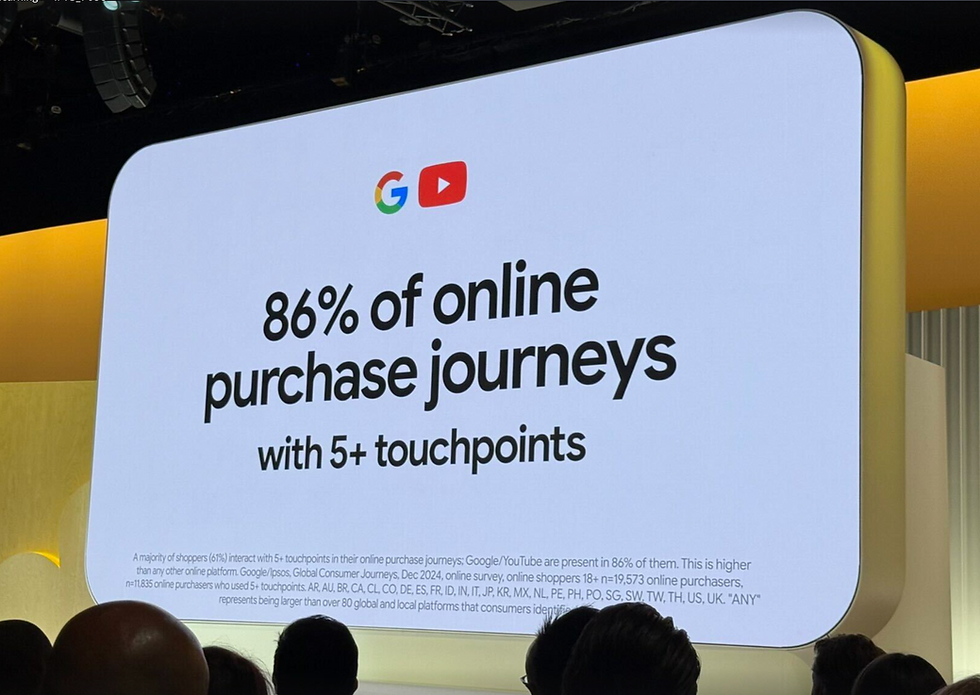The Future of Google Shopping: What’s Changing in 2025 and How to Prepare
- Flomaticx

- Jun 7
- 3 min read

Google Shopping is evolving fast—and 2025 is shaping up to be a turning point for e-commerce advertisers. With the latest updates to Performance Max, Google is doubling down on AI-powered automation, cross-channel visibility, and creative-first strategies. For Shopify and WooCommerce store owners, staying ahead means adapting to these shifts with smart feed management and campaign strategies.
In this blog, we break down the most important changes to Google Shopping in 2025 and how your business can prepare to thrive.
What’s New in Google Shopping in 2025?
1. Channel Performance Reporting in Performance Max
For years, advertisers wanted more transparency into where their Performance Max campaigns were delivering. In 2025, Google is finally delivering that with channel-level reporting.
This feature gives you a detailed breakdown of impressions, interactions, and conversions across individual Google surfaces like:
Discover
Gmail
YouTube
Google Display Network
Shopping tab
You’ll now be able to answer questions like: Which channel drives the highest ROAS? or Where are my highest-converting clicks coming from?
Tip: Use this data to adjust your creative assets and feed structure depending on the channel performance.
2. Video Ads on More Surfaces, Including Google Shopping
Google is integrating video ad placements across more surfaces, including Web Search, Image Search, and most notably—Shopping. This is a huge leap in how product listings are visually presented.
If you’re not already using video in your feed, now is the time to start. Adding high-quality video assets helps your listings stand out and creates an immersive experience for product discovery.
Action Step: Optimize your product feed to include video creatives that align with shopping intent.
3. Smart Bidding Exploration to Discover New Conversions
Smart Bidding has become more flexible with the introduction of Smart Bidding Exploration. This new setting allows advertisers to loosen ROAS targets slightly to unlock new traffic sources and conversion opportunities.
You can now select a “ROAS target tolerance” range (e.g., +/-15%) to help Google AI test broader targeting while keeping your efficiency goals in check.
Why it matters: More adaptive bidding = better reach + conversion diversity = higher total value.
4. AI Max for Search Campaigns Brings Creative Enhancements
Google is bringing AI Max features to Search campaigns—combining Performance Max-style automation with the targeting precision of standard search. You’ll now get:
Dynamic search term matching
Text and asset customization
Final URL expansion
This makes it easier to scale creative testing and reach new segments without manually creating dozens of ad variants.
5. YouTube Creator Partnerships Hub
Influencer integration is going mainstream. Google is launching a YouTube Creator Partnerships Hub that allows brands to find and collaborate with relevant YouTube creators directly inside their ad account.
You can now:
Search for creators mentioning your brand
Manage creator partnerships
Promote creator content in your campaigns
This is a major opportunity for e-commerce brands to scale user-generated content with trusted creators.
How to Prepare for These Changes
Revamp Your Shopping Feed: Make sure it’s optimized for all surfaces—text, image, and video.
Enable Channel-Level Reporting: Use insights to build channel-specific creative strategies.
Test Smart Bidding Exploration: Be open to looser ROAS constraints in favor of incremental growth.
Create Video Content Now: Don’t wait—start building short product videos today.
Explore Creator Partnerships: Add influencer marketing to your Shopping strategy through YouTube.
Final Thoughts
The future of Google Shopping in 2025 is more visual, more automated, and more connected than ever. From Performance Max upgrades to deeper YouTube integrations, staying competitive means adapting now—not later.
Need help managing your Shopping campaigns? At Flomaticx, we specialize in Google Shopping feed management and Performance Max optimization. Get in touch today and let’s scale your growth the smart way.


